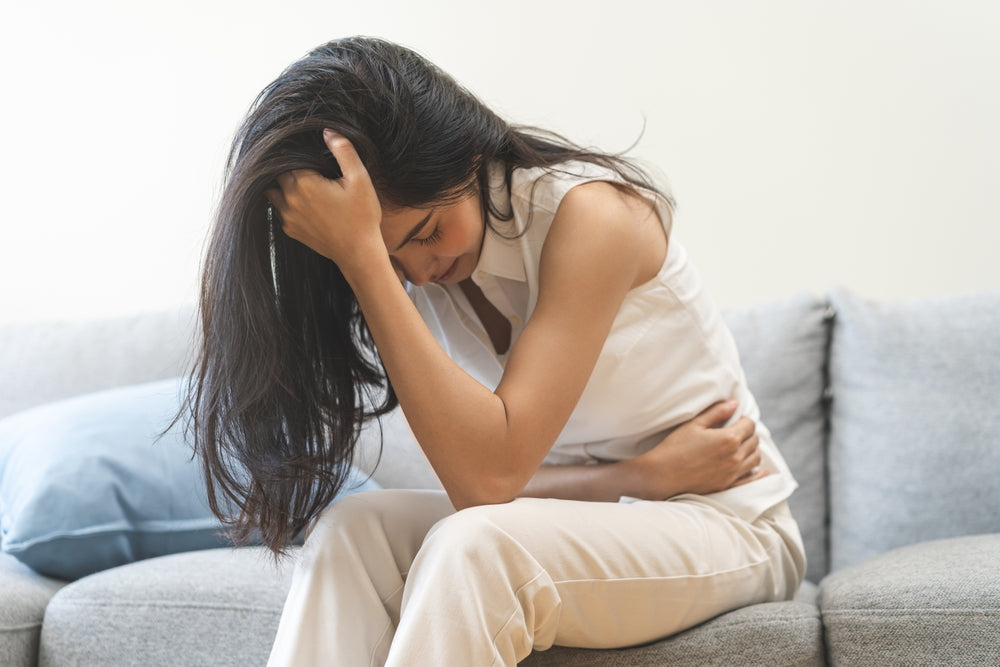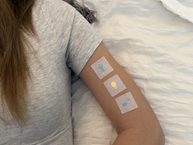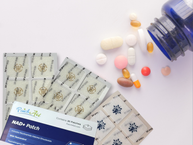While some women experience effortless menstrual cycles, others might struggle with… let’s just say, some added challenges. But rest assured, there's resolve even for those discomforting situations - introducing the PatchAid Easy Cycle Patch that is specially formulated to alleviate common menstrual symptoms, including pain.
Period pain, along with bloating, poor sleep, and mood swings, can be a recurring monthly issue for many women. The pain results from contractions of the uterus as it prepares to shed its lining when no pregnancy occurs in that cycle. While the discomfort could range from barely noticeable to overwhelmingly intense, there are ways to cope. This article presents six ways to relieve period pain.
Remember, you should always consult with your healthcare provider before commencing any medication or supplement regimen. Now, let's talk about the PatchAid Easy Cycle Patch and how it may aid you in these trying times.
1. Exercise Regularly
It could be challenging to engage in physical activity when you're in pain, but trust us, it's worth it. Exercising helps your body release endorphins - natural chemicals known to alleviate pain. Not only can endorphins curb pain, but they also combat mood swings and irritability, making you feel happier. Moreover, exercise can help reduce stress, another contributing factor to period pain. Take it slow, listen to your body, and consider outdoor workouts. Natural light can uplift your mood.
2. Maintain a Balanced Diet
Eating healthy food and avoiding unhealthy options could make a significant difference in your period pain. For instance, foods rich in B vitamins and iron are crucial for energy metabolism and could help combat period fatigue. Here are some food choices brimming with essential vitamins and minerals that support normal muscle relaxation and energy production:
- Vegetables: eggplant, spinach, broccoli, carrots, onions, zucchini, tomatoes.
- Whole grains: oatmeal, popcorn, shredded wheat, whole-wheat pasta, whole-grain bread and English muffins, and brown rice.
- Legumes: beans, lentils, split peas.
- Low-fat dairy products: skim milk, plain yogurt, low-fat cottage cheese, low-fat cheese.
- Peanuts, seeds, and nuts: macadamia nuts, hazelnuts, almonds, cashews, and pistachios.
- Fish
Avoid foods that could potentially make you feel irritable or bloated like sugary, fatty, or high-sodium foods, especially during certain periods of the month.
3. Stress Management
Stress can elevate pain. Managing stress effectively may aid in reducing the severity of period pain. Techniques include talking to friends, exercising, playing a musical instrument, listening to music, progressive muscle relaxation, or practicing yoga.
4. Use Heat
Applying heat can enhance blood flow and relax muscles, consequently reducing period pain. A heating pad, a warm bath, or heat patches can serve the purpose well. A warm bath can also reduce stress, and adding bubbles or aromatherapy products can amplify the calming effect.
5. Pain Relievers
Over-the-counter pain relievers like NSAIDs (e.g., ibuprofen and naproxen) reduce inflammation and pain. Acetaminophen can provide relief too, but without addressing inflammation. Consult with your healthcare provider for appropriate medications and correct usage.
6. Try Vitamin Patches
The PatchAid Easy Cycle Patch is rich in essential vitamins and minerals like vitamins C and E (antioxidants), iron and zinc (for immune function), and calcium and magnesium (vital for normal muscle function). It also includes antioxidants and herbs like black cohosh and dong quai that have traditionally been used to alleviate PMS and period pain symptoms.
The patch is easy to use during this challenging period, when your focus and energy might be compromised. Simply apply it to a smooth, clean skin area, day or night.
Period pain, albeit unwelcome, is real. But with the right measures including medications (as recommended by your doctor), maintaining a healthy lifestyle and the PatchAid Easy Cycle Patch, you can navigate these difficult times more manageable. Discuss any severe menstrual symptoms with your doctor before starting any medication or nutritional supplements.
Note: These statements haven't been evaluated by the Food and Drug Administration. PatchAid patches are not intended to diagnose, treat, cure, or prevent any disease. Please consult with a licensed medical practitioner for any medical condition.







